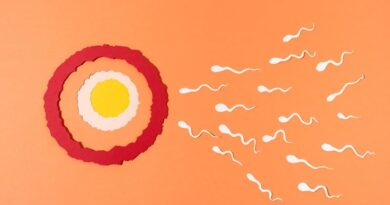What is orgasms ? What happens during an orgasm?
Many people think that the orgasm is the most exciting part of being sexual. It is a strong feeling of pleasure and sensation in the body. Researchers still have a lot to learn about the orgasm, and their ideas about what it is and how it works have changed over the past 100 years.
Fast facts on orgasms
- Orgasms release endorphins, known as feel-good hormones, which may make people feel sleepy, relaxed, or happy afterwards.
- Orgasms do not only occur during sexual stimulation.
- People of all genders can experience orgasm disorders
- An estimated 1 in 3 males have experienced premature ejaculation.
- Transgender people are able to orgasm
What is an orgasm?
When a person feels the most pleasure, they are having an orgasm. The body lets go of stress, and the perineal muscles, the anal sphincter, and the reproductive organs all contract in a rhythmic way.
When a man has an orgasm, he will usually ejaculate, while a woman’s uterine wall will contract. During sexual activity or an orgasm, ejaculation can also happen in women.
Orgasm models
Researchers have put orgasms into staged models of how people respond sexually. Even though the way people have an orgasm can be very different, there are a few basic physical changes that tend to happen in most cases.
The following models are patterns that can be seen in all kinds of sexual responses, not just penile-vaginal.
What happens during an orgasm?
During an orgasm, a person may feel intense pleasure in their genitalia and all over their bodies. Everyone has a different experience when they have an orgasm.
The face, neck, or chest may turn red after an orgasm. Endorphins may also make people feel sleepy, calm, or happy after a workout.
For females
The muscles in a woman’s vagina and anus may contract about once per second,, five to eight times. The heart rate and breathing rate may go up.
The vagina may get wet before and during an orgasm, and it may even ejaculate this fluid. Researchers have found that between 10–70% of women ejaculate.
When you touch the clitoris right after an orgasm, it may feel more sensitive or uncomfortable.
For males
For men, the muscles in the penis and anus can contract between five and eight times once every second. The heart rate and breathing rate may go up.
About 1–2 tablespoons of semen may come out of the penis. People may not ejaculate when they are having an orgasm, but the two usually happen at the same time.
When you touch the head of the penis right after an orgasm, it may feel more sensitive or uncomfortable.
How long does it last?
Research suggests that female orgasms may last for around 20–35 seconds.
How long does a male orgasm last for?
While the length of an orgasm varies for each individual, orgasms tend to last between 10–60 seconds.
Potential health benefits of orgasm
People can sleep better after having an orgasm. having an orgasm with a partner helped people sleep better. When people masturbated, they got orgasms, which made them sleep better and helped them fall asleep faster.
During an orgasm, a hormone called oxytocin is made by the body. Oxytocin may be good for your health in many ways, such as:
- Regulating anxiety
- Reducing the risk of heart disease
- Reducing the risk of cancer, such as ovarian cancer
Types of orgasm
There are a lot of different kinds of orgasms. Here are some examples:
- Clitoral orgasm: This is when a person has an orgasm because the clitoris is being stimulated. A clitoral stimulation is the cause of 60% of orgasms in women.
- Vaginal orgasm: This is when an orgasm happens: when the cervix is stimulated. Vaginal orgasms are caused by the clitoris being indirectly stimulated during sex.
- Blended orgasm: This is what happens when clitoral and vaginal orgasms happen at the same time.
- Anal orgasm: Some females experience orgasms during anal sex.
- G-spot orgasm: An orgasm can occur as a result of stimulation of the G-spot.
- Multiple orgasms: A person can experience a series of orgasms over a short time.
- Orgasms can be brought on by thoughts alone, without any physical stimulation.
- Nipple orgasm: Even if only the nipples are touched, a person can have an orgasm. When the nipples can activate the same part of the brain is stimulated as when the genitalia are stimulated.
The above list is not complete, and researchers are still looking into the different kinds of orgasms that people can have.
Can males experience multiple orgasms?
Males can experience multiple orgasms.
But this doesn’t happen often. Less than 10% of people in their 20s can have them, and less than 7% of people 30 or older can.
Researchers have found that multiple orgasms in men can happen randomly or all at once.
Occasionally having more than one orgasm will be separated by a few minutes. Condensed multiple orgasms are two to four bursts of orgasm that happen within a few seconds to two minutes.
More research is needed to find out what makes it possible for a person to have more than one orgasm.
The female orgasm
Excitement
When a woman is physically or mentally stimulated, the blood vessels in her genitalia get bigger. When blood flow goes up, fluid leaks through the walls of the vulva, making it swell up and feel wet. Inside, the top of the uterus gets bigger.
During this phase, the heart beats faster, you breathe faster, and your blood pressure goes up. When blood vessels get bigger, it can make a person look flushed, especially on the neck and chest.
Plateau
When the blood flow to the introitus (the opening to the uterus) stops, it gets firm. Breasts can get bigger, and when there’s more blood flow to the areola, the nipples look less straight. The clitoris pulls back and presses against the pubic bone, making it look like it goes away.
Orgasm
The genital muscles, including the uterus and the opening to the womb, contract in a rhythmic way about every 0.8 seconds apart. The average length of a female orgasm is 20–35 seconds, which is longer than the average length of a male orgasm.
Most women don’t have a “recovery period” like men do, so they can have more orgasms when stimulated more than once.
The male orgasm
Excitement
Physical or mental stimulation of a man can cause him to get an erection. Blood flows into the corpora, which is the soft tissue that runs the length of the penis. This makes the penis get bigger and stiffer. As the scrotum gets tighter, the testicles move up toward the body.
Plateau
The glans and testicles get bigger as the blood vessels in and around the penis fill up with blood. Also, the muscles in the thighs and buttocks tighten, the blood pressure goes up, the heart rate goes up, and the rate of breathing goes up.
Orgasm
Semen gets into the urethra when the pelvic floor muscles, the prostate gland, the seminal vesicles, and the vas deferens all contract at the same time.
Ejaculation is the process by which the semen comes out of the penis. This is caused by the pelvic floor muscles and the prostate gland contracting.
Resolution
The man is now in a short period of getting better. This is called the refractory period, and its length is different for each person. It can last anywhere from a few minutes to a few days, and as a man gets older, it usually lasts longer.
During this phase, the size of the penis and testicles goes back to what it was before. The pulse will be high and the breathing may be heavy and fast.
Disorders
Orgasmic disorders can lead both the person who is having the symptoms and their sexual partner feel upset, frustrated, and ashamed.
Even though orgasms are the same for both men and women, doctors often use gendered language to talk about orgasm disorders.
Female orgasmic disorders
Female orgasmic disorders are caused by absence or significant delay in orgasms after enough stimulation.
Anorgasmia is what doctors call not being able to have orgasms. This phrase can mean that a person has never experienced or seen (primary anorgasmia) or when a person who has had orgasms in the past can no longer have them (secondary anorgasmia). The condition can happen all the time or only in certain situations.
Female orgasmic disorders can be caused by things like gynaecological problems or taking certain medications, or they can be caused by things like anxiety or depression.
Male orgasmic disorders
Male orgasmic disorder, also called male anorgasmia, is when an orgasm doesn’t happen or takes a long time to happen after enough stimulation.
Male anorgasmia can last for the rest of a person’s life or start after a period of normal sexual functioning. The condition can happen all the time or only in certain situations.
Premature ejaculation
Ejaculating is often a sign that a man is about to have an orgasm. A common sexual problem is when a man ejaculates before he wants to. This is called premature ejaculation.
Early ejaculation could be caused by a mix of psychological and biological factors, such as guilt, anxiety, or changes in hormone levels or nerve damage.
To get a free consultation Call or Whatsapp +91 9995202100
Fill up online consultation form https://www.khokardispensary.com/quick-online-consultation/
Tags : Low Sperm Count, Ayurveda Treatment for Erectile Dysfunction, Ayurveda Treatment for Premature Ejaculation, Infertility, Ayurveda Treatment for Male Infertility, Ayurveda Treatment for Female Infertility, Ayurveda Treatment Men Sexual Problem, Ayurveda Treatment Women Sexual Problem, What is Female Orgasmic Disorder
Originally posted 2022-12-23 06:19:09.





